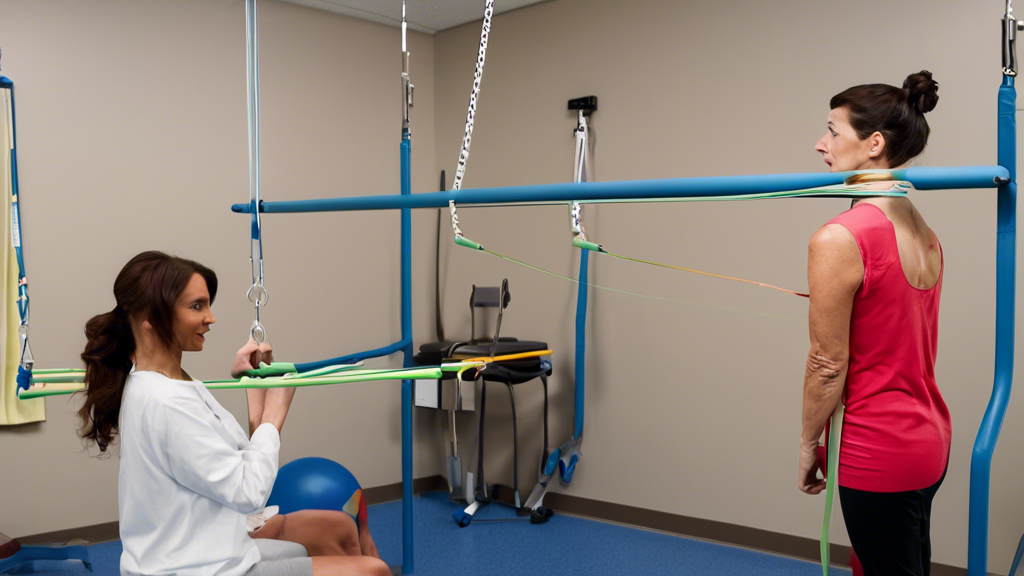Assessing your strength and mobility needs is a crucial step in any fitness journey. Understanding what constitutes physical strength and mobility is key. Strength refers to the muscle’s ability to exert force, while mobility pertains to the ability of your joints to move through their full range of motion. These components, while interconnected, serve different purposes in overall fitness and daily activities.
Regular assessments of your strength and mobility are vital for several reasons. They help identify potential weaknesses and imbalances in your body, which can prevent injuries and improve performance. These assessments also provide a foundation for developing personalized fitness plans that address your unique needs and goals. By knowing where you stand, you can create a more targeted and effective workout routine.
There are various methods to assess strength and mobility, from functional movement screenings that evaluate how well your body moves as a whole, to flexibility tests that measure the range of motion in specific joints, and strength measurements that quantify your muscle power.
Interpreting the results of these assessments is essential for setting realistic and achievable fitness goals. By understanding your current capabilities, you can tailor your exercise routines to improve both strength and mobility, leading to better overall health and fitness.
Understanding the Importance of Strength and Mobility Assessment
Defining Strength and Mobility
Strength and mobility are fundamental components of physical fitness, yet they represent distinct aspects of our bodily capabilities. Strength refers to the muscle’s ability to exert force against resistance. It comprises elements such as muscular endurance, maximum force (also known as maximal strength), and power, which is the ability to exert force in a short period. On the other hand, mobility defines the range of motion available to joints due to muscle flexibility, joint health, neuromuscular coordination, and overall body control.
The key differences between the two are clear. While strength focuses on power and endurance, mobility emphasizes flexibility and control. Both are essential for holistic physical fitness, allowing the body to perform efficiently and avoid injury. Effective fitness training should, therefore, balance routines to enhance both strength and mobility.
Benefits of Assessment
Regular assessments of strength and mobility provide critical insights into one’s physical performance and potential areas for improvement. Here are several important benefits of conducting systematic assessments:
- Identifying Potential Weaknesses: Comprehensive evaluations can pinpoint specific muscles or joints that may need targeted training. This allows for tailored interventions that correct imbalances or weaknesses, which might otherwise go unnoticed.
- Preventing Injuries: By understanding current fitness levels, it’s possible to avoid overtraining, which is a common cause of injury. For instance, weak stabilizing muscles around the joints can be strengthened before they become problematic.
- Developing Personalized Fitness Plans: Baseline measurements allow for the creation of personalized and effective fitness programs. These plans are tailored to the individual’s unique needs, ensuring that workouts are safe yet challenging enough to stimulate growth and improvement.
- Tracking Progress: Regular re-assessments can help track improvements over time, providing motivation and concrete evidence of the effectiveness of training regimens. This feedback loop is critical for maintaining long-term fitness goals.
- Optimizing Performance: Athletes and regular fitness enthusiasts can benefit from assessments that highlight areas where targeted training can lead to enhanced performance in specific activities or sports.
Implementing strength and mobility assessments not only highlights existing issues but also proactively combats future problems. Fitness levels are dynamic, and systematic evaluations provide a roadmap for continuous improvement, ensuring workouts remain effective and aligned with evolving fitness goals.

Methods for Assessing Strength and Mobility
Common Assessment Techniques
Evaluating strength and mobility is essential for crafting an effective fitness plan. Here are some of the most common assessment techniques:
Functional Movement Screenings (FMS)
Functional Movement Screenings (FMS) are widely used to assess an individual’s movement patterns. The test involves a series of seven fundamental movements designed to identify limitations or asymmetries. These movements include deep squats, hurdle steps, in-line lunges, shoulder mobility tests, active straight-leg raises, trunk stability push-ups, and rotary stability tests.
Flexibility Tests
Flexibility is a key component of mobility. Flexibility tests measure the range of motion of various joints and muscles. Common tests include:
- Sit-and-Reach Test: Evaluates the flexibility of the lower back and hamstring muscles.
- Shoulder Flexibility Test: Assesses the flexibility of the shoulder girdle and upper back muscles.
- Trunk Rotation Test: Measures the range of motion in the thoracic spine.
Strength Measurements
Strength assessments are crucial to understanding muscular power and endurance. Popular techniques include:
- Handgrip Strength Test: An easy and quick measure of overall muscular strength.
- One-Repetition Maximum (1RM) Test: Determines the maximum weight a person can lift for one repetition in exercises like the bench press, squat, or deadlift.
- Isometric Strength Tests: Assess the maximal force exerted by a muscle or muscle group while in a stationary position.
Interpreting Results and Setting Goals
Once you’ve conducted various strength and mobility assessments, the next step is to interpret the results and set appropriate fitness goals. Here’s how:
Analyzing Functional Movement Screenings
The FMS provides scores for each movement, typically on a scale from 0 to 3. A lower score indicates greater limitations. Use these scores to identify areas that need improvement. For instance, a low score on the deep squat may highlight issues in the hips, knees, or ankles.
Evaluating Flexibility Test Results
Flexibility test results are usually measured in inches or degrees. Compare your results to standard benchmarks to determine your flexibility level. If you’re below average, incorporating more stretching and mobility exercises can help improve your range of motion.
Understanding Strength Measurements
Strength test results are often compared to normative data based on age, gender, and body weight. For example, in the 1RM test, if your bench press is significantly lower compared to your body weight, you might need to focus on upper body strength training.
Setting Realistic Goals
Once you’ve interpreted your results, it’s vital to establish realistic and achievable goals. SMART goals (Specific, Measurable, Achievable, Relevant, Time-bound) are highly effective. For example:
- Specific: Increase hamstring flexibility by 2 inches in 3 months.
- Measurable: Track progress using the sit-and-reach test.
- Achievable: Ensure the goal is within reach based on current flexibility.
- Relevant: Align the goal with overall fitness objectives, such as improved performance in sports.
- Time-bound: Set a clear deadline (e.g., 3 months).
Customizing Exercise Routines
Using your assessment data to tailor your exercise routine maximizes effectiveness and minimizes the risk of injury. For instance:
- If you scored low on the FMS deep squat: Incorporate hip mobility exercises and ankle stretches into your routine.
- If your shoulder flexibility is limited: Add daily shoulder mobility drills and upper back stretches.
- If your grip strength is weak: Include grip-strengthening exercises, such as farmer’s carries and dead hangs.
Regularly reassessing your strength and mobility ensures you stay on track and adapt your fitness plan as needed for continuous improvement.
In conclusion, assessing strength and mobility is a critical step in understanding and improving your physical fitness. By clearly defining what constitutes strength and mobility and recognizing the differences between the two, you can better appreciate their unique contributions to overall health and performance. Regular assessments are essential as they help identify areas of weakness, prevent injuries, and allow for the creation of personalized fitness plans that cater to individual needs.
Using common assessment techniques such as functional movement screenings, flexibility tests, and strength measurements, you can gain valuable insights into your physical capabilities. Interpreting these results accurately enables you to set realistic, achievable fitness goals and tailor your exercise routines accordingly. Whether you are a seasoned athlete or just embarking on your fitness journey, incorporating regular strength and mobility assessments into your routine will help optimize your training and ensure long-term success.

